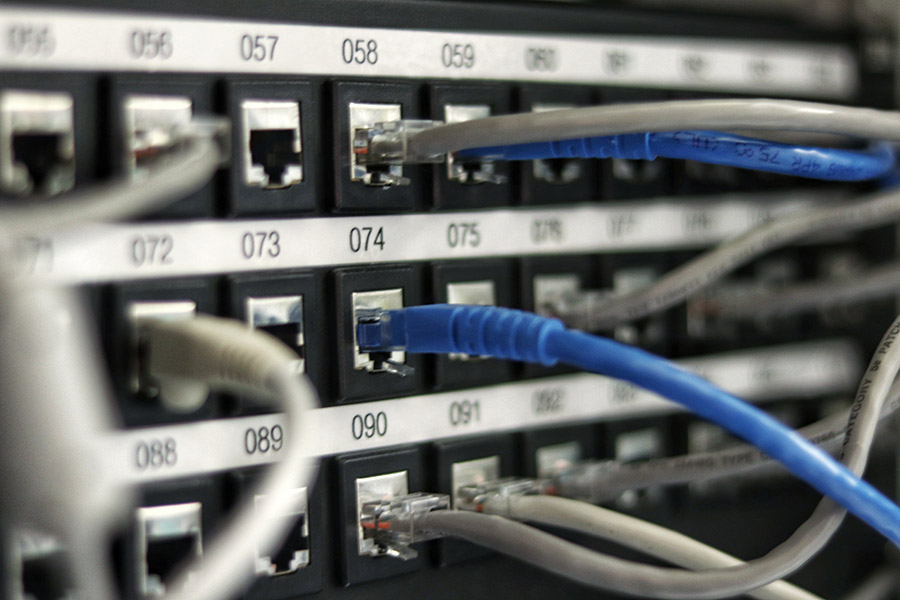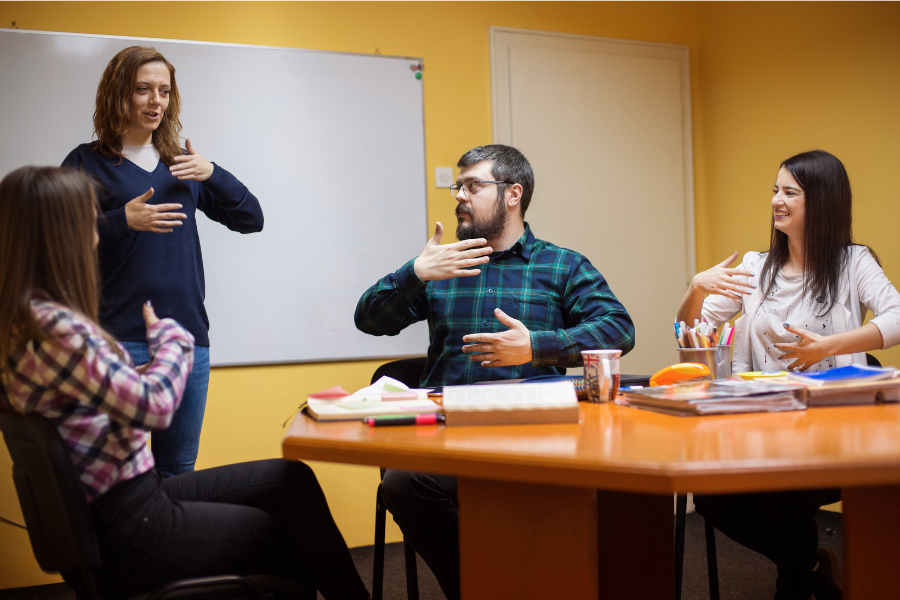Breaking Barriers: Unleashing the Power of VRS
Table of Contents
Introduction
All Hands VRS welcomes you!
This post serves as a guide to understanding the inner workings of Video Relay Services (VRS) and the essential role played by American Sign Language (ASL) interpreters. Ideal for VRS beginners or those seeking to deepen their knowledge, join us as we explore this transformative technology.
Understanding the Mechanics: How Does Video Relay Service Operate?
Essential Equipment for the Use of VRS

- High-speed internet connection;
- A device with a camera and microphone (computer, smartphone, or specialized VRS device;
- Good lighting and a quiet space so the interpreter can see and hear you clearly; and
- An account with a VRS provider.
Step-by-Step Guide: How to Make a VRS Call
From A Deaf Person’s Perspective

Step 1: Have all the necessary equipment set up:
- computer, smartphone, or tablet with a camera;
- Stable internet connection; and
- VRS software or app installed.
Step 2: Open the VRS app and sign in
- From the user-friendly interface enter the phone number you wish to dial.
- Press the “Dial” option that will connect you to the next available ASL interpreter who will facilitate the conversation.
Step 3: Instruct the ASL interpreter to proceed with the call
- Interpreter will call the number.
- Once a call is connected, the interpreter will interpret your signs into spoken words for the hearing person on the other end, and vice versa.
Step 4: At the completion of the call, sign “goodbye” to the interpreter and end the call on your device.
From A Hearing Person’s Perspective

Step 1: Dial the number for whomever you wish to communicate
- Enter the number you wish to call then press dial.
- Wait to automatically be connected to an ASL interpreter via the video relay service chosen by the Deaf person.
Step 2: Wait for your call to be answered
- Once connected to an ASL interpreter, the interpreter will instruct you to hold while your call is being connected.
- The interpreter will notify once your call is connected.
Step 3: Begin speaking
- You may begin speaking directly to your Deaf counterpart and conduct your conversation as you would any other conversation.
Step 4: Conclude your call
- Once you are done speaking with your Deaf counterpart, say your goodbyes and simply hangup.
The Crucial Role of ASL Interpreters in Video Relay Service Operations

American Sign Language interpreters are the ones who make real-time communication possible between Deaf and hearing individuals on the telephone.
Qualifications to work as a VRS interpreter
- Must be fluent in ASL and English to understand the nuances of each language
- Cross-cultural competence in Deaf culture and hearing culture
- Comfortable using technology
- Comply with all FCC rules and regulations
- Adhere to the Registry of Interpreters for the Deaf (RID) code of professional conduct. For more in-depth look at the RID code of professional conduct click here
Advantages of Using Video Relay Services for Effective Communication

VRS is more than just a tech-savvy way to communicate. For Deaf people it is the pathway to enhanced communication, empowerment, and independence.
- Video Relay Service is the tool that gives Deaf people the freedom to make or receive phone calls, whether that be to friends, to book appointments, or even to ace that job interview they’ve been dreaming about – all with the push of a button.
- Video Relay Service empowers Deaf people because it is like having a personal ASL interpreter ready to interpret your phone call at a moment’s notice – all one needs is an electronic device with a camera.
- VRS is a gateway to independence because it takes away the reliance on someone else to make a simple appointment or to catch up with a friend. Deaf people now make those calls themselves. This sense of independence can be life changing as it boosts one’s confidence and encourages one to take on new challenges. It gives Deaf people the freedom to manage one’s own life as they see fit.
- Video Relay Service levels the playing field so that Deaf people have a dynamically equivalent telephone experience as compared to their hearing counterparts. VRS provides all parties involved in the conversation with the full range of human emotion. This range of emotion includes facial expressions, tone, affect, and linguistic nuances. VRS fosters a deeper understanding between people, breaking down barriers as each individual’s message is clearly and accurately conveyed.
- VRS uplifts the social and emotional well-being of its users. This is one of the most transformative aspects of VRS. Imagine being able to chat with friends, attend virtual family gatherings, or even go on a video date, all without the hassle of text-based communication. VRS allows for real-time, face-to-face interactions that are as close to in-person conversations as one can get. This not only helps in building stronger relationships but also boosts self-esteem and mental health. It’s like having a social lifeline at one’s fingertips, making one feel connected and emotionally supported.
Conclusion
We’ve journeyed through the intricate landscape of VRS, from understanding its mechanics to recognizing the indispensable role of ASL interpreters. VRS is not just a technological advancement; it’s a lifeline that fosters independence, empowerment, and emotional well-being for Deaf people. It’s a tool that levels the playing field, offering a dynamically equivalent telephone experience for everyone involved. In a world where communication is key, VRS acts as a catalyst for breaking down barriers and building stronger, more meaningful connections.
Call To Action
Now that you’re familiarized with the world of VRS, we invite you to take the next step. Whether you’re a VRS beginner or looking to deepen your understanding, why not sign up for our newsletter? You’ll get the latest updates, tips, and insights delivered straight to your inbox. Click the “Subscribe” button and join the All Hands VRS community today!




